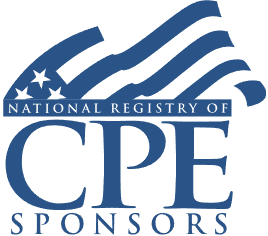Maximizing the 199A Deduction: Increasing Assets and Wages, Separating and Aggregating Businesses, and More

Course Details
- smart_display Format
On-Demand
- signal_cellular_alt Difficulty Level
Intermediate
- work Practice Area
Tax Preparer
- event Date
Monday, June 13, 2022
- schedule Time
1:00 p.m. ET./10:00 a.m. PT
- timer Program Length
110 minutes
-
BARBRI is a NASBA CPE sponsor and this 110-minute webinar is accredited for 2.0 CPE credits.
-
BARBRI is an IRS-approved continuing education provider offering certified courses for Enrolled Agents (EA) and Tax Return Preparers (RTRP).
This course will provide advisers to businesses with strategies to increase the generous 20 percent QBI (qualified business income) deduction under 199A. The panel will cover tips to maximize W-2 income and assets when applicable, separating and aggregating businesses, and other planning tips.
Faculty

Ms. Fuller is a corporate and international tax attorney with over 20 years experience in advising a wide range of clients -- including private clients and companies, joint ventures, private equity funds, HNW indviduals, C-Suite executives, "start-ups," and government entities -- on transactional, investment, and supply-chain strategies to achieve optimal tax and business results. She has deep expertise in structuring cross-border M&A transactions, and advising mobile international families. Her clients hail from a multitude of industries, including the burgeoning world of decentralized finance (DeFi). Pamela is also a seasoned taxpayer advocate, with decades of experience resolving complex U.S. federal, state, and foreign tax controversies.

Ms. Palovick specializates in real estate, and focuses most of her time in the areas of partnership and individual taxation. She assists in all areas of compliance as well as tax planning and succession planning.
Description
Initially, practitioners worked to grasp the basic concepts, eligibility, and reporting the 199A deduction. Now with the basics understood, advisers are taking proactive steps to maximize this tax-saving deduction.
The calculation, in its purest form, is 20 percent of qualified income. The calculation requires extra time and adds an extra layer of complexity to every return with a taxable business. For income exceeding certain thresholds, the deduction is limited to the lesser of 20 percent of QBI or the greater of 50 percent of W-2 wages paid by the business or the total of 2.5 percent of UBIA (unadjusted basis after initial acquisition) plus 25 percent of W-2 wages.
There are planning opportunities to explore for the subset of taxpayers subject to the W-2 and UBIA thresholds. Increasing salaries and buying additional property would quickly increase the deduction for businesses subject to the W-2 and UBIA limitations but would also increase costs as well. Knowing the potential caveats of each strategy to determine when the benefit of the 20 percent deduction outweighs any additional costs is critical.
Various strategies surround the 199A deduction. Ensuring a business' income is qualified, staying under thresholds, increasing asset acquisition costs, and increasing W-2 wages are just a few approaches that can significantly impact a taxpayer's deduction. Less apparent are strategies surrounding sales of businesses, businesses with losses, and for converting nonqualified income.
Listen as our panel of experts divulges strategies for maximizing the deduction under 199A.
Outline
- QBI: an overview
- Individual threshold
- Maximizing W-2 wages
- Increasing UBIA
- SSTBs
- Aggregating and separating businesses
- Converting non-qualified income
- Planning for sells
- Planning for NOLs
- Other tips
Benefits
The panel will review these and other important issues:
- Maximizing W-2 wages
- Increasing asset acquisition costs
- Converting non-qualifying income to QBI
- QBI deduction planning for pending sales
NASBA Details
Learning Objectives
After completing this course, you will be able to:
- Recognize ways to maximize W-2 wages
- Determine how to convert non-qualifying income to QBI
- Ascertain how to maximize the 20 percent QBI deduction
- Identify SSTBs and how they are impacted by IRC 199A
- Develop strategies to take full advantage of the tax benefits of IRC 199A
- Field of Study: Taxes
- Level of Knowledge: Intermediate
- Advance Preparation: None
- Teaching Method: Seminar/Lecture
- Delivery Method: Group-Internet (via computer)
- Attendance Monitoring Method: Attendance is monitored electronically via a participant's PIN and through a series of attendance verification prompts displayed throughout the program
- Prerequisite: Three years+ business or public firm experience preparing complex tax forms and schedules, supervising other preparers or accountants. Specific knowledge and understanding of pass-through taxation, including taxation of partnerships, S corporations and sole proprietorships, qualified business income, net operating losses and loss limitations; familiarity with net operating loss carry-backs, carry-forwards and carried interests.

Strafford Publications, Inc. is registered with the National Association of State Boards of Accountancy (NASBA) as a sponsor of continuing professional education on the National Registry of CPE Sponsors. State boards of Accountancy have final authority on the acceptance of individual courses for CPE Credits. Complaints regarding registered sponsons may be submitted to NASBA through its website: www.nasbaregistry.org.

Strafford is an IRS-approved continuing education provider offering certified courses for Enrolled Agents (EA) and Tax Return Preparers (RTRP).
Unlimited access to premium CLE courses:
- Annual access
- Available live and on-demand
- Best for attorneys and legal professionals
Unlimited access to premium CPE courses.:
- Annual access
- Available live and on-demand
- Best for CPAs and tax professionals
Unlimited access to premium CLE, CPE, Professional Skills and Practice-Ready courses.:
- Annual access
- Available live and on-demand
- Best for legal, accounting, and tax professionals
Related Courses

Mastering Form 5472: Filing Requirements for Foreign Individuals, LLCs, and Companies
Friday, May 30, 2025
1:00 p.m. ET./10:00 a.m. PT

Charitable Remainder Trusts: Utilizing CRATs and CRUTs to Minimize Income and Transfer Tax, SECURE 2.0 QCDs
Thursday, May 29, 2025
1:00 p.m. ET./10:00 a.m. PT

LLC and Partnership Purchases: Entity Interests vs. Asset Sales, Basis Adjustments, Elections, Tax Reporting
Thursday, May 15, 2025
1:00 PM E.T.
Recommended Resources
How CPE Can Bridge the Gap Between What You Know and What You Need to Know
- Career Advancement